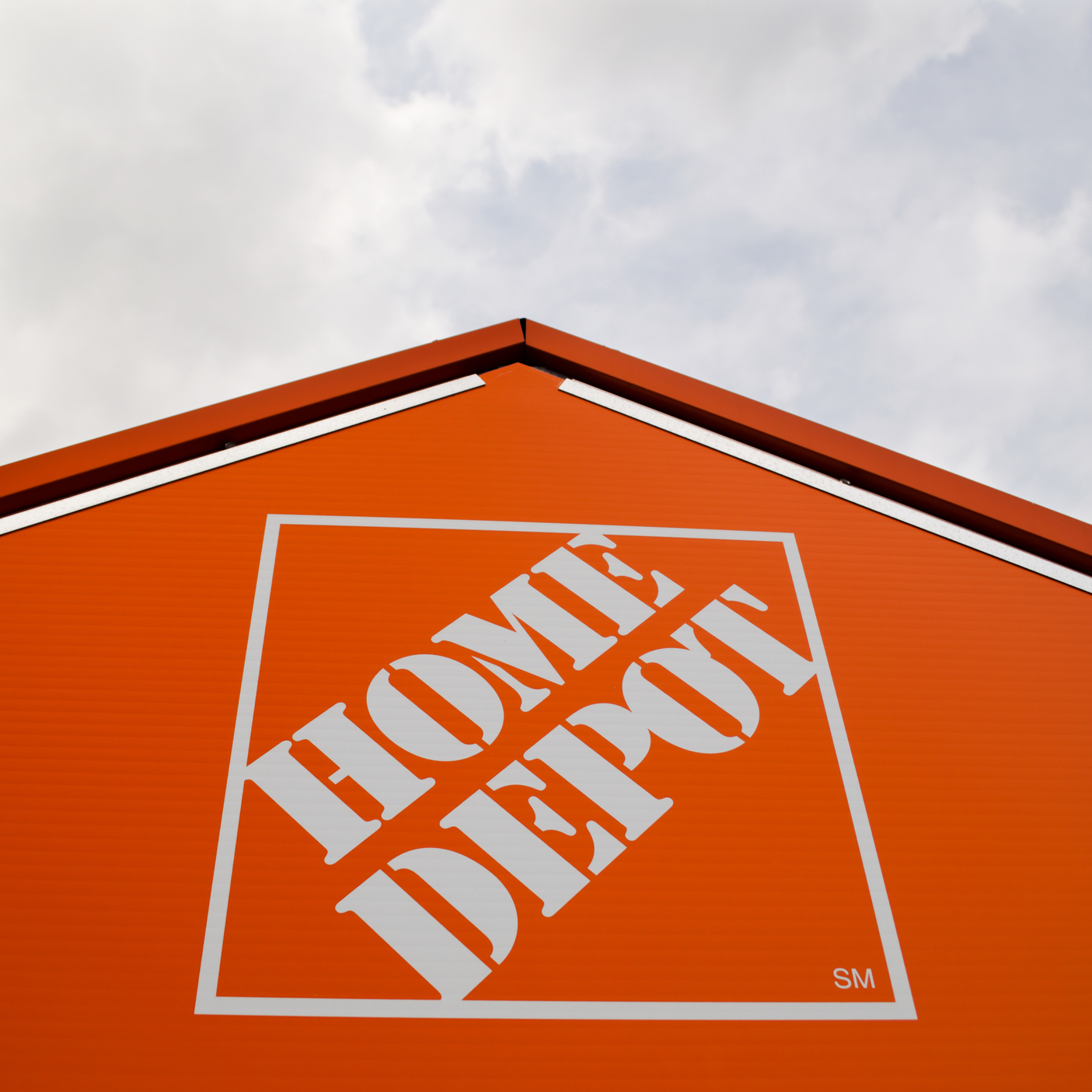
With the economy now growing steadily for nearly a decade and unemployment near a historic low, incomes have been on the rise. And with higher incomes, consumer spending could be poised to jump. While higher prices at the gas pump could crimp spending, most on Wall Street have a pretty positive outlook for retail.
Roughly 70% of U.S. GDP in 2017 ($19.39 trillion) consisted of personal consumption, broken down into goods and services, with retailers making up a majority of goods sold. Retail sales hit a record of $5.7 trillion in 2017, according to the U.S. Census. That is better than the prerecession high of $4.4 trillion in 2007. It is also a 42% increase from 2009’s record low of $4.06 trillion.
Not only do retailers power the U.S. economy, but also they employ a large portion of the U.S. workforce. Although Education and Health Services (34.48 million jobs) as well as Professional and Business Services (18.84 million) employ more than the Retail trade (16.72 million), the industry still employs roughly 10% of all working Americans.
Click here to see the 18 American companies that control what you buy.
Click here to see our detailed findings and methodology.

18. Nordstrom, Inc.
>Market Cap: $8.56 billion
>Revenue: $15.48 billion
>Net Income: $437.0 million
>Employees: approximately 76,000
Nordstrom has always been one of the big department stores names. It is known as a fashion retailer that sells apparel, shoes, cosmetics, and accessories. Compared to some of the other retailers on this list Nordstrom has a comparatively small footprint of 370 stores in 40 states.
[in-text-ad]

17. Macy’s, Inc.
>Market Cap: $11.82 billion
>Revenue: $24.84 billion
>Net Income: $1.55 billion
>Employees: approximately 130,000
Macy’s is another big department store. In fact, it even has its own parade. The company
sells a range of merchandise, such as apparel and accessories for both men and women, cosmetics, home furnishings, and more. Macy’s is also the oldest retailer on this list, founded in 1830 in Cincinnati, Ohio.
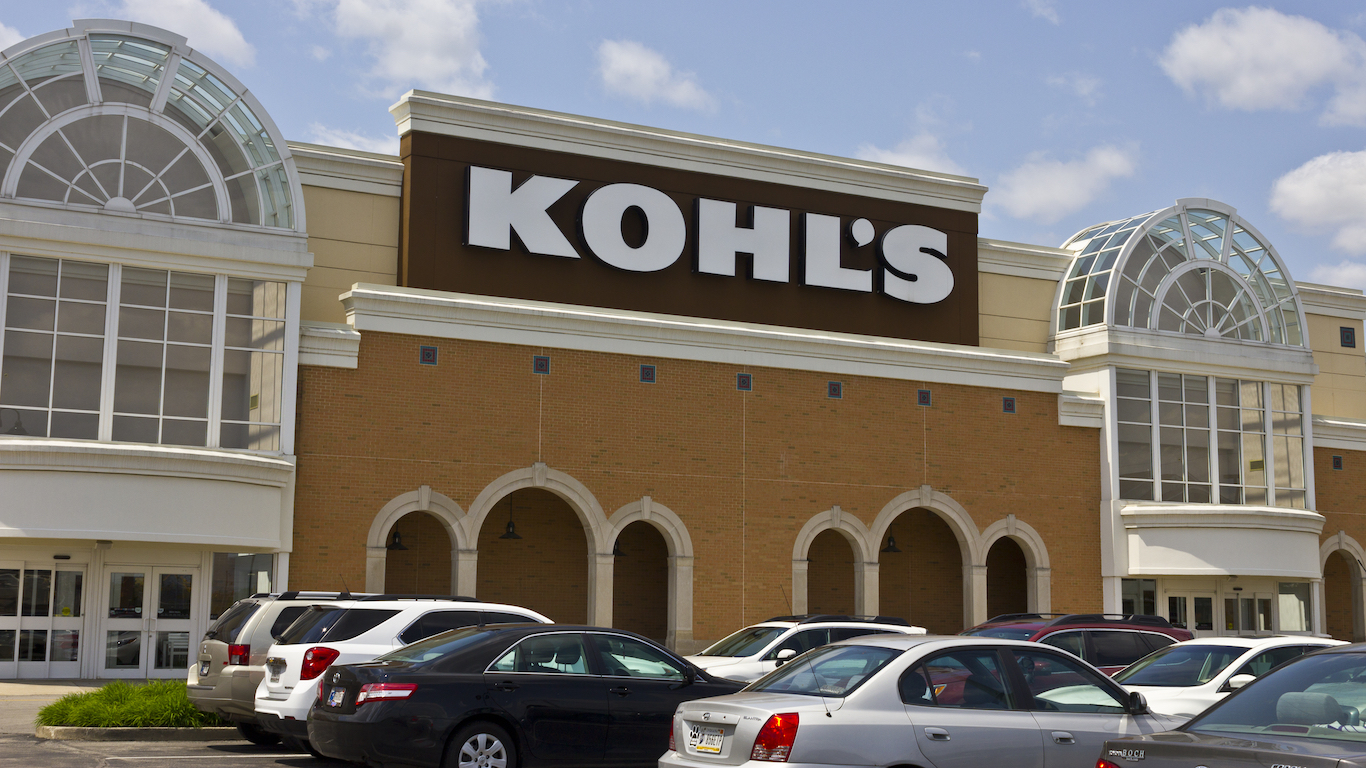
16. Kohl’s Corp.
>Market Cap: $12.31 billion
>Revenue: $19.10 billion
>Net Income: $859.0 million
>Employees: approximately 33,000
Kohl’s operates department stores in the United States that offer private label, exclusive and national brand apparel, footwear, accessories, beauty and home products to children, men and women customers. While retail chains have suffered from internet pressure, Kohl’s has held its own as consumers see the company as a solid discount retailer. In addition, Amazon is growing its partnership with the department store chain. Last summer, the two companies announced that Kohl’s would begin selling Amazon devices, such as the Echo and Fire tablets, at 10 of Kohl’s stores. Kohl’s also will be accepting Amazon.com returns at certain U.S. locations.
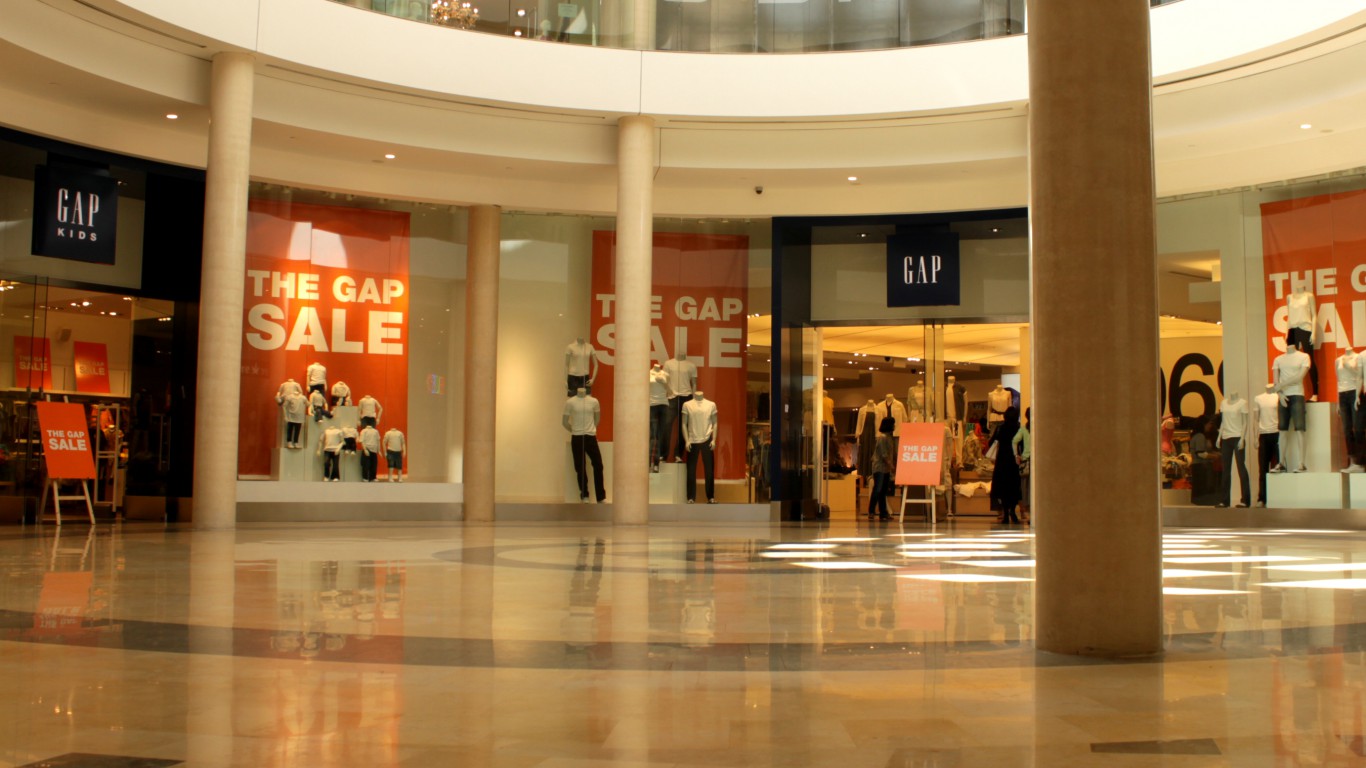
15. The Gap, Inc.
>Market Cap: $12.45 billion
>Revenue: $15.86 billion
>Net Income: $848.0 million
>Employees: approximately 135,000
Gap sells private label merchandise through three main retail brands: The Gap, Old Navy, and Banana Republic, along with smaller brands Athleta and Intermix. The retailer also sells its products through its company websites. Most of its international locations are Gap stores, concentrated in Western Europe (France, United Kingdom), Japan, China, and Canada. The company has over 3,500 stores worldwide.
[in-text-ad-2]
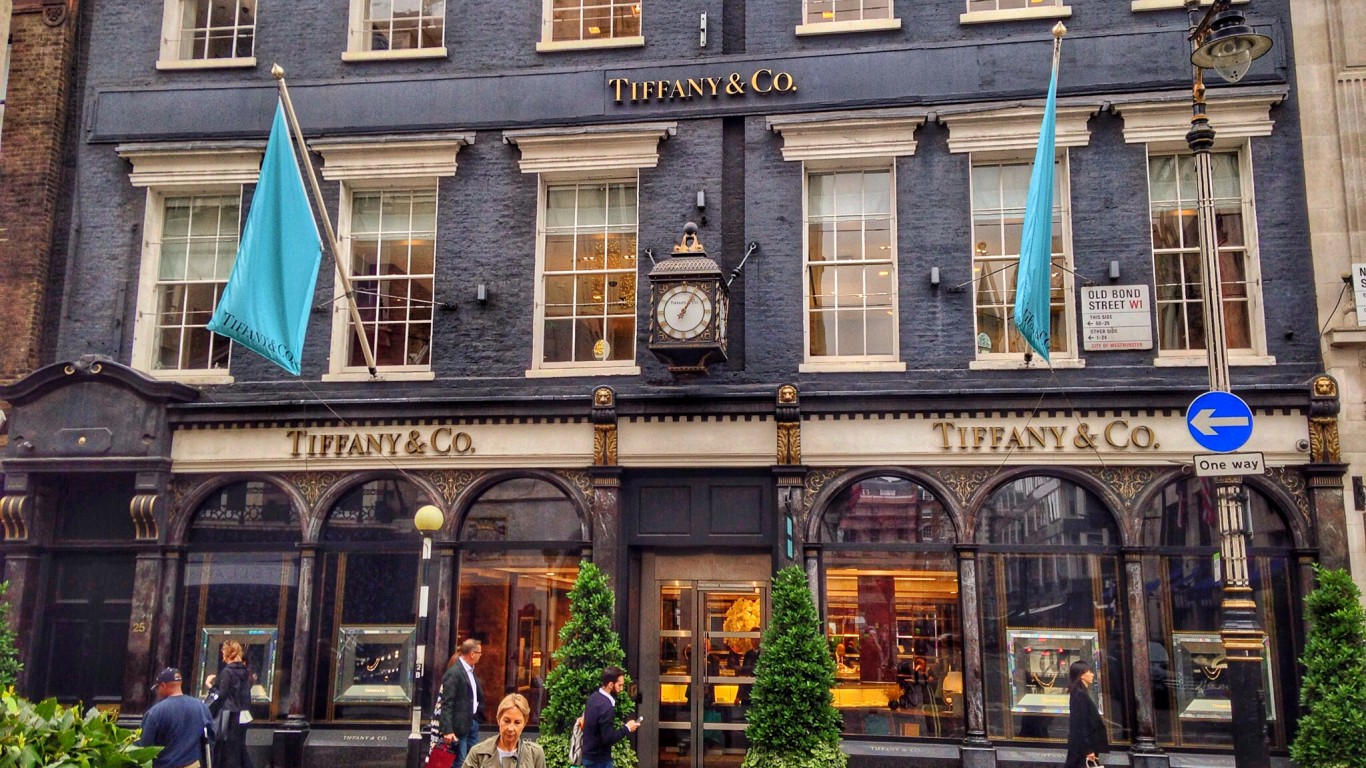
14. Tiffany & Co.
>Market Cap: $16.80 billion
>Revenue: $4.17 billion
>Net Income: $370.1 million
>Employees: approximately 13,100
Tiffany designs, manufactures, and retails jewelry and other items. Apart from jewelry and diamonds, this company also sells timepieces, leather goods, sterling silver goods, china, crystal, and other accessories. Compared to any other retailer on this list, Tiffany has a very small footprint, operating only 315 U.S. stores at the end of 2017. With such valuable products coming through the doors and an average gross margin of over 60%, the company has proved that it doesn’t need a large footprint to be successful.

13. The Kroger Co.
>Market Cap: $20.57 billion
>Revenue: $122.66 billion
>Net Income: $1.91 billion
>Employees: approximately 449,000
Kroger is one of the top grocers in the United States, operating with an umbrella of various banner names and over 2,800 retail locations. The company operates supermarkets, multi-department stores, jewelry stores, and convenience stores. A recent push into organic food has helped Kroger compete with the likes of Whole Foods in recent years, but its Restock Kroger initiative is the company’s most recent plan to drive a competitive advantage by delivering relevant customer experience whether in-store or digital.
[in-text-ad]

12. Dollar Tree, Inc.
>Market Cap: $20.62 billion
>Revenue: $22.25 billion
>Net Income: $1.71 billion
>Employees: approximately 56,300
Though the bargain retailer’s shares were hit hard earlier this spring, this has not stopped it from outperforming the markets in the past 52 weeks. Dollar Tree is easily one of the largest dollar store chains in the United States. The company operates 14,482 stores in 48 states and five provinces in Canada under the Dollar Tree, Family Dollar, and Dollar Tree Canada banners. A solid competitor in the discount market, lower-income consumers drive growth at this chain.
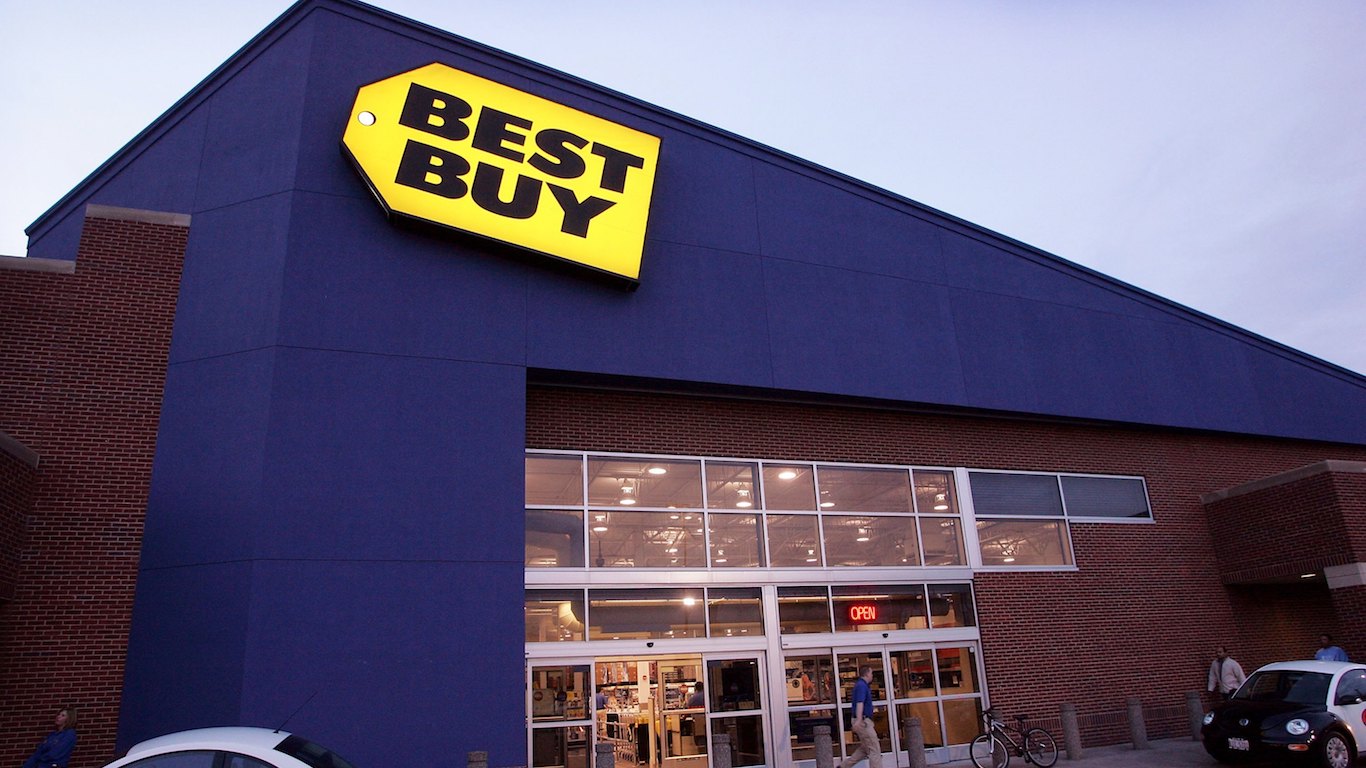
11. Best Buy Co., Inc.
>Market Cap: $21.24 billion
>Revenue: $42.15 billion
>Net Income: $999.0 million
>Employees: approximately 125,000
Best Buy is the top consumer electronics retailer. The company finished its fiscal 2018 with approximately 1,200 large-format stores and 300 small-format stores. The retailer also offers a variety of high-margin services through its Geek Squad and Magnolia home theater channels. Best Buy is in the process of launching its growth strategy, “Best Buy 2020: Building the New Blue,” which will entail expanding what Best Buy sells as well as evolving how it sells.

10. O’Reilly Automotive, Inc.
>Market Cap: $23.14 billion
>Revenue: $8.98 billion
>Net Income: $1.13 billion
>Employees: approximately 76,946
O’Reilly Automotive is the largest of the auto parts chains in the United States. As its name implies, the store sells anything automobile related, whether it is water pumps, brake system components, batteries, belts, and hoses, as well as the tools to install and repair these parts. O’Reilly Auto has a footprint of just over 5,000 stores spanning 47 states.
[in-text-ad-2]

9. Dollar General Corp.
>Market Cap: $25.79 billion
>Revenue: $23.47 billion
>Net Income: $1.54 billion
>Employees: approximately 129,000
Dollar General is one of the nation’s top discount retailers, carrying a huge inventory of items designed to appeal to a cost-conscious consumer. In addition to high-quality private brands, the retailer sells products from America’s best-known manufacturers, including Coca-Cola, Clorox, Energizer and more, at a discount. The company often focuses on smaller communities, where a giant big-box store could struggle to be profitable. Currently Dollar General operates approximately 14,700 retail locations in 44 states.

8. Ross Stores, Inc.
>Market Cap: $31.81 billion
>Revenue: $14.13 billion
>Net Income: $1.36 billion
>Employees: approximately 82,700
Ross Stores continues to be a favorite with cost-conscious consumers looking for the top brands and value. The discount retailer is the second largest off-price retailer in the United States. It operates about 1,400 stores under the Ross Dress for Less brand and over 200 stores under the dd’s DISCOUNTS brand. About 75% to 80% of the company’s customers are women. Ross targets customers from middle-income households, while dd’s targets customers from more moderate income households.
[in-text-ad]
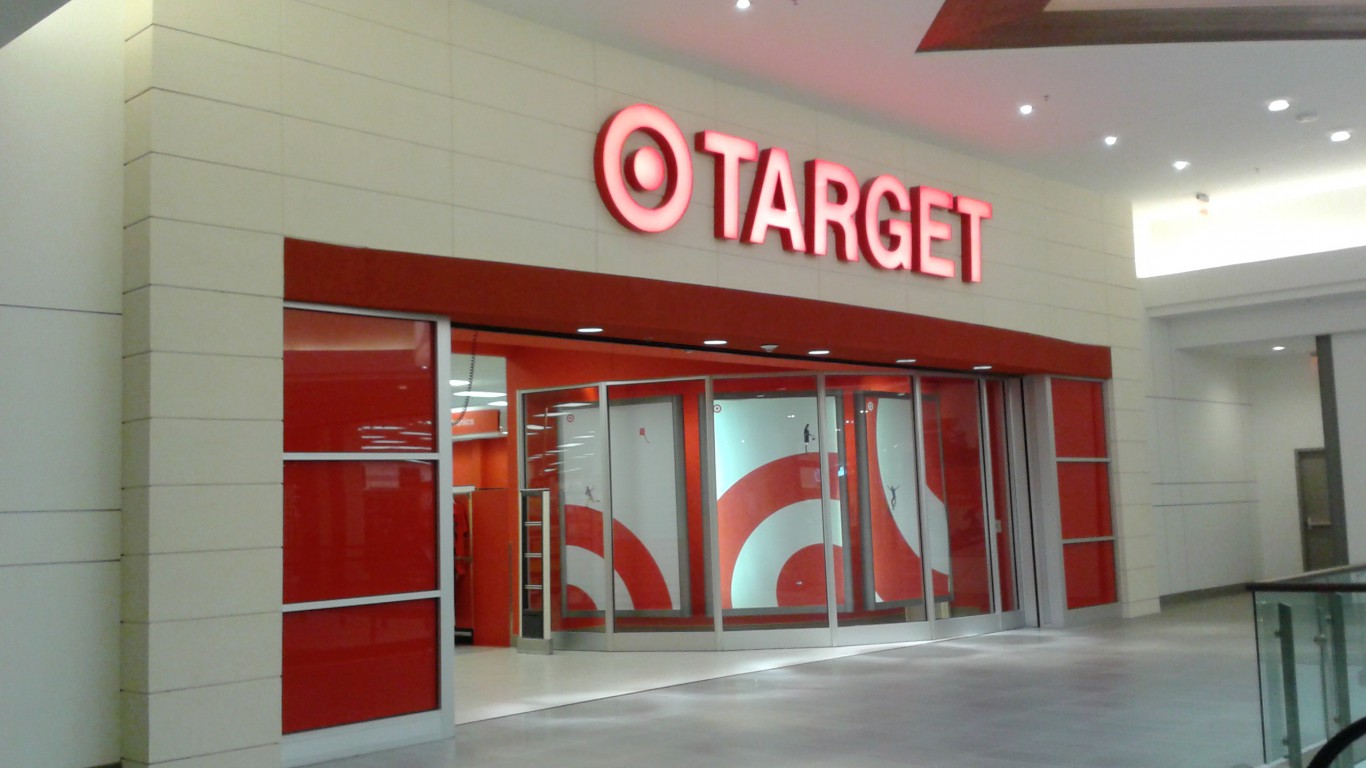
7. Target Corp.
>Market Cap: $40.56 billion
>Revenue: $71.88 billion
>Net Income: $2.93 billion
>Employees: approximately 345,000
Target has had its share of issues over the past few years, but it seems to have recovered from them nicely. Target is one of the largest discount retailers in the United States, operating some 1,800 Target stores across the country. Since 2017, the retailer has poured money into its e-commerce offerings, overhauling its stores and refreshing its inventory to better compete against Amazon. Target has even embraced the same-day delivery concept. Most importantly, the company seems to have put some good distance between it and the headline issues that were public relations nightmares, and it continues to be a favorite destination of consumers.

6. The TJX Companies, Inc.
>Market Cap: $59.28 billion
>Revenue: $35.86 billion
>Net Income: $2.61 billion
>Employees: approximately 249,000
TJX is the largest global off-price retailer, with over 4,000 stores worldwide, seven retail chains, and three e-commerce sites. The company offers brand-name merchandise at 20% to 60% discounts to department and specialty store prices. Its stores are generally known for their treasure hunt experience. The core TJX customer is a middle- to upper-middle income female.

5. Walgreens Boots Alliance, Inc.
>Market Cap: $63.47 billion
>Revenue: $118.21 billion
>Net Income: $4.08 billion
>Employees: approximately 235,000
Walgreens Boots Alliance is one of the largest drugstore chains on the planet with over 8,100 U.S. locations and over 4,700 retail stores abroad. Walgreens sells prescription and non-prescription drugs as well as general merchandise, including household items, convenience and fresh foods, personal care, beauty care, and much more. Prescription drugs account for 69% of sales, while retail products are the other 31%. The company has recently integrated its e-commerce platform with its Walgreens mobile application to allow customers to refill prescriptions through scan technology and receive text messages alerting when a refill is due.
[in-text-ad-2]

4. Lowe’s Companies, Inc.
>Market Cap: $80.04 billion
>Revenue: $68.62 billion
>Net Income: $3.45 billion
>Employees: approximately 200,000
Lowe’s is the second biggest home improvement chain in the United States. Although Lowe’s is not as large as Home Depot in terms of market cap or employees, it does edge out Home Depot with its larger footprint in terms of stores. Lowe’s offers all sorts of building materials, home improvement products, and lawn and garden products, as well as installation services through contractors.

3. Costco Wholesale Corp.
>Market Cap: $89.90 billion
>Revenue: $129.03 billion
>Net Income: $2.68 billion
>Employees: approximately 133,000
Costco has become the ultimate destination for the American consumer regardless of the economy. The retailer has a unique business model in that it operates membership warehouses, and the company buys the majority of its merchandise directly from manufacturers. Essentially, this cuts out the middleman and cuts down the prices. Costco sells in bulk but also at a lower price. Costco’s business model has helped fuel its rapid growth.
[in-text-ad]
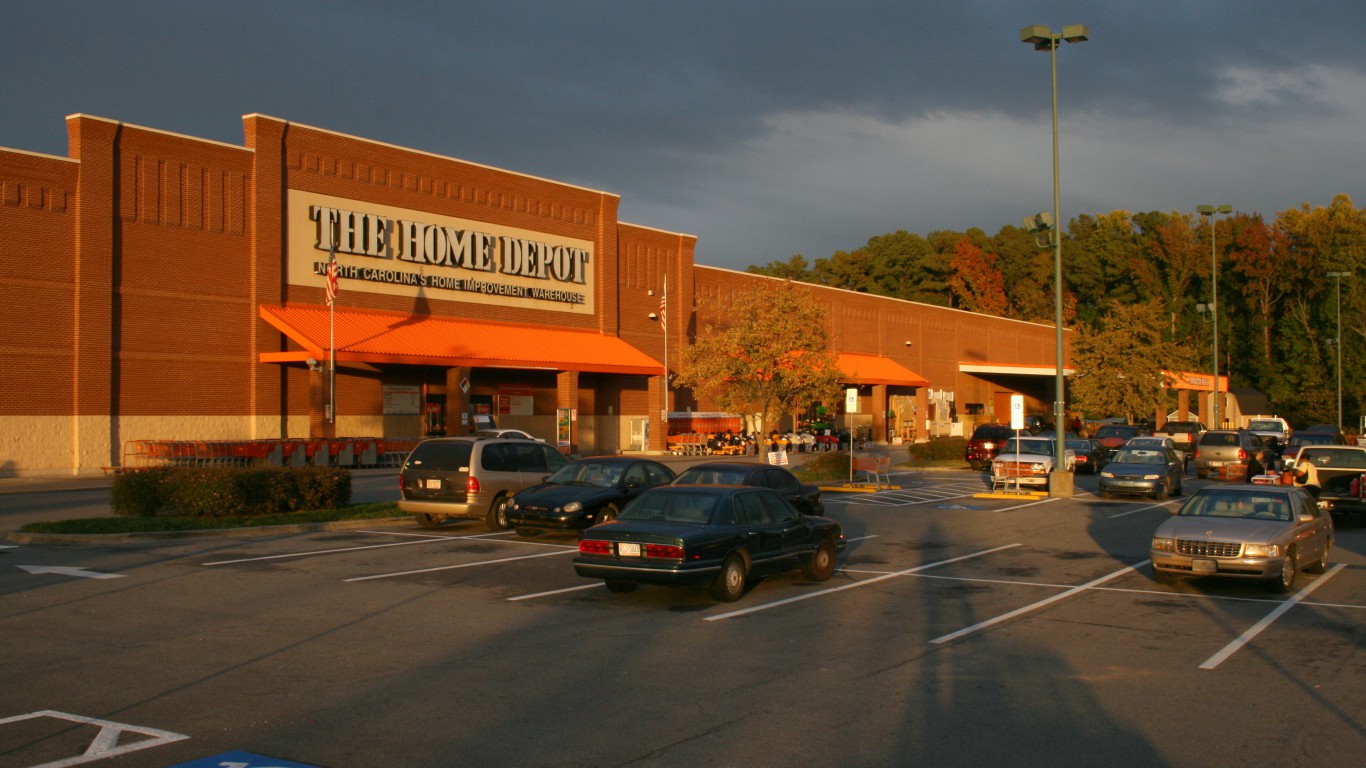
2. The Home Depot, Inc.
>Market Cap: $229.46 billion
>Revenue: $100.90 billion
>Net Income: $8.63 billion
>Employees: approximately 413,000
The Home Depot remains the undisputed leader in the home improvement retail category. It is the world’s largest home improvement specialty retailer, with 2,270 retail stores in all 50 states, Puerto Rico, U.S. Virgin Islands, Guam, 10 Canadian provinces, and Mexico. Home Depot stores sell various building materials, home improvement products, and lawn and garden products, as well as provide installation, home maintenance and professional service programs to do-it-yourself (DIY), do-it-for-me (DIFM), and professional customers.
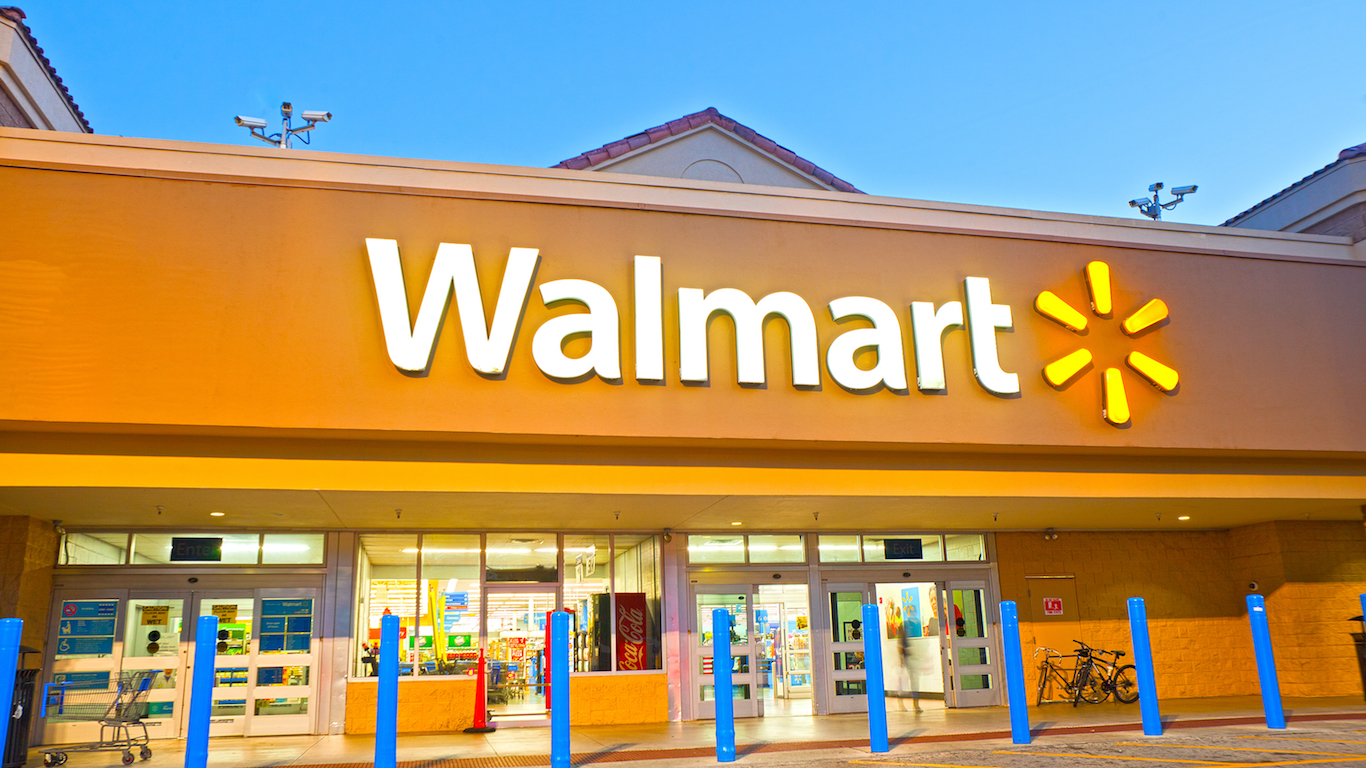
1. Walmart Inc.
>Market Cap: $243.77 billion
>Revenue: $500.34 billion
>Net Income: $9.86 billion
>Employees: approximately 2,300,000
There is no doubt that Walmart is the world’s largest retailer, operating retail stores in the United States under the formats of Walmart Stores, Supercenters, Neighborhood Markets, as well as Sam’s Club locations. It also has a growing e-commerce business (including Jet.com). Internationally, Walmart also operates locations in several countries, including Argentina, Brazil, Canada, China, Japan, Mexico and the United Kingdom. Each week, nearly 260 million customers and members visit the company’s 11,535 stores under 72 banners in 28 countries.
Detailed Findings
Out of U.S. retailers, Walmart is not just as the largest publicly traded employer in the world, but also the highest grossing company in the world. Founded by Sam Walton, Walmart made its humble beginnings as a small discount store in 1945. Over time, with an aggressive expansion strategy, it has come to be the top dog.
Most retailers cannot claim the success that Walmart has achieved, and many, in fact, are falling to the wayside because they have failed to adapt and change with the industry. Stores like Sears and J.C. Penney have fallen on hard times, and management is facing some tough decisions. The root problem seems to be fairly obvious for most of the stores in decline — failure to adapt to the spread of e-commerce.
Retailers that have been more successful over the past few years have updated their model to rely more on e-commerce sales, or omnichannel. Although shoppers will never wholly abandon brick-and-mortar stores, they expect retailers to offer convenient online alternatives.
The antithesis of these retailers and perhaps the biggest thorn in their sides is Amazon. Retailers have lost more sales to Amazon than to each other. Though Amazon now has acquired brick-and-mortar locations in the form of Whole Foods, it offers a practically limitless online marketplace with prompt delivery. This is more than most retailers can offer.
While Amazon poses a formidable threat to the industry, brick-and-mortar stores will always have a place in the U.S. economy. As retailers continue to develop in their fight against Amazon, it seems that this will only benefit the consumer with more options to shop than ever before.
Methodology
24/7 Wall St. ordered our list of major retailers by market cap as of June 19, 2018. We also included the retailers’ most recent fiscal year revenues, net income, and number of employees.
Take Charge of Your Retirement: Find the Right Financial Advisor For You in Minutes (Sponsor)
Retirement planning doesn’t have to feel overwhelming. The key is finding professional guidance—and we’ve made it easier than ever for you to connect with the right financial advisor for your unique needs.
Here’s how it works:
1️ Answer a Few Simple Questions
Tell us a bit about your goals and preferences—it only takes a few minutes!
2️ Get Your Top Advisor Matches
This tool matches you with qualified advisors who specialize in helping people like you achieve financial success.
3️ Choose Your Best Fit
Review their profiles, schedule an introductory meeting, and select the advisor who feels right for you.
Why wait? Start building the retirement you’ve always dreamed of. Click here to get started today!
Thank you for reading! Have some feedback for us?
Contact the 24/7 Wall St. editorial team.
 24/7 Wall St.
24/7 Wall St. 24/7 Wall St.
24/7 Wall St. 24/7 Wall St.
24/7 Wall St.



